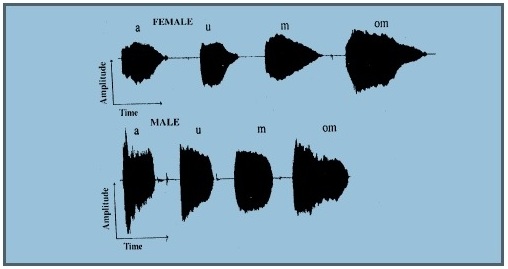– Dr. Raj Kumar, Assistant Professor, Institute of Advanced Sciences, Dartmouth, MA.
 Dr. Kumar has developed a broad multidisciplinary background in analytical chemistry, biochemistry, spectroscopy, biophysical studies, cell culture, cell and animal assays. He is an alumni of Banaras Hindu University, Varanasi where he completed his bachelor and master in science. He completed his Ph.D. from University of Massachusetts, USA, in the field related to Botulinum Neurotoxin. Before joining to the institute, he worked as a lecturer in UMASS, Dartmouth. Apart from his own field, he has also developed the interest in studying the various aspects of Vedas. He already published an article about Ayurveda. As a rational thinker, he emphasized more on scientific aspects of Vedas.
Dr. Kumar has developed a broad multidisciplinary background in analytical chemistry, biochemistry, spectroscopy, biophysical studies, cell culture, cell and animal assays. He is an alumni of Banaras Hindu University, Varanasi where he completed his bachelor and master in science. He completed his Ph.D. from University of Massachusetts, USA, in the field related to Botulinum Neurotoxin. Before joining to the institute, he worked as a lecturer in UMASS, Dartmouth. Apart from his own field, he has also developed the interest in studying the various aspects of Vedas. He already published an article about Ayurveda. As a rational thinker, he emphasized more on scientific aspects of Vedas.
From the very words of the Krishna Yajurveda, Kapisthala-katha-Samhita (42.1) —– “Prajāpatir vai idam āsīt: In the beginning was Brahman. Tasya vāg dvitīya āsīt; with whom was the Vāk (or Sound)… Vāg vai paramam Brahma; and the Vāk (Sound) is Brahman”. According to the “Shabda Yoga”—– The Science of Light and Sound, creation came into being through the light and sound of the creator. This sound is called OM. There is no scientific evidence which can provide proofs whether OM is a sound of creation or not. Although all the spiritual thoughts/aspects/truth cannot be verified with modern scientific tools, a few fundamental bases can be tested with modern scientific instrumentation (may not be appropriate all the time). In this blog, my efforts will be more concentrated on the scientific basis rather than the spiritual one.
First look into the phonetics of the word. According to Mandukya Upanishad (Johnston, 1923), OM is the manifestation of all states of time, Atman, consciousness, and knowledge. In Sanskrit, the sound “O” is a diphthong spelled “AU”. A diphthong is a mixture of two vowel sounds and can be separately heard. This is why OM sounds “AUM”, which represents the 3-folds division of time.
A (apti) represents the waking state (symbolizes darkness, inertia, ignorance).
U (utkarsha) represents the dream or creative state (symbolizes passion, activity, dynamism).
M (miti) represents the state of deep sleep or meditative state (symbolizes purity, truth, light).
When we sleep we dream and this dream state is part of bigger dream state which we experience in waking state. The dream which we see in the meditative or sleeping state is the dream within dreams, and the life is a big dream or illusion. At the end of OM chanting, there is complete silence. This represents the state of Turiya, the fourth state; infinite or pure consciousness. Achieving this state evaporates all dreams and one faces the reality (dream disappears and truth emerges). Chanting of OM symbolizes a journey of darkness to pure light—–
The symbol of OM is also representation of these four states (Johnston, 1923). The large bottom curve symbolizes the waking state, A. The middle curve signifies the dream state, U. The upper curve denotes the state of deep sleep, M. The dot signifies the fourth state of consciousness, Turiya. The semi-circle at the top represents “Maya” and separates the dot from the other three states. The illusion of Maya due to the materialistic world is an obstacle to the realization of the pure consciousness (Fig. 1).
 Figure 1: A representation of word OM.
Figure 1: A representation of word OM.
Now, examine the significance of the above explanation scientifically. Heisnam Jina Devi and colleagues analyzed sound related to OM (A, U, M and AUM). They observed that A is flat, U is initially flat but finally tapered off or flattened off abruptly, and M is the synchronized sound of U which gradually tapered or flattened off. Thus, OM sound is a mixture of all three sounds (A, U, and M) (Fig. 2).
 Figure 2: Spectral analysis of Vedic mantra OM (AUM) (Taken from Heisnam Jina Devi et al., 2004).
Figure 2: Spectral analysis of Vedic mantra OM (AUM) (Taken from Heisnam Jina Devi et al., 2004).
In another experiment, scientists analyzed fMRI before and after OM (Kalyani et al., 2011). Chanting of OM affects the vibration and generate resonances near to the ear, very close to the cranial nerves. These resonances are transmitted through the auricular branch of the vagus nerve. Chanting of OM has significant deactivation of amygdala, parahippocampal and hippocampal brain regions.
Chanting of OM mantra sequentially activates the stomach, spinal cord, throat, nasal and brain region. The energy moves from stomach all the way to the brain. Resonance observed in fMRI in the vagus nerve supports the above point. So, chanting OM has several benefits – therapeutic, physiological and spiritual.
Om is also called Pranava, meaning it sustains life and runs through the breath or Prana. The ‘O” or ‘AU’ sound makes all the bones of the thoracic cage vibrate, which leads to the vibration of lungs and finally to the delicate membranes of the alveolus. This can stimulate pulmonary cells and enables a proper exchange of air in the lungs. These vibrations produce a much accentuated effects in the endocrine glands. This leads to the balance activation of several glands and organs. Besides this vibrational message, which results from the emission of the vowels ‘AU’, the latter acts especially in the abdominal and thoracic cage, whilst the vibration of ‘M’ in the skulls induces a vibration of the cranial nerves. Gurjar and Ladhake (2008) concluded, based on their research, that OM chanting steadys the mind, which ultimately helps in reducing stress of the human mind.
Based on the above data OM can be represented as a model (Fig. 3), summarizing the above arguments as follows. By chanting ‘A’ we activate communication of body and mind, whereas chanting ‘U’ and ‘M’ activates conscious and unconscious mind which finally connects to infinite or pure consciousness.
 Figure 3: A model representing different components of OM.
Figure 3: A model representing different components of OM.
In my view, there are two important components which are the basis of Vedic philosophy: a) The unmanifest (avyakt) gives rise to the manifest (vyakt), and b) Sound vibration is a tool which provides a medium for this transformation. The primordial sound is a medium (pure consciousness) from where everything emerged and to which everything will return. Thus, sound vibration has a profound effect on the physical, conscious/unconscious, astral, and spiritual body. This is one of the reasons why Vedic philosophy considers OM as a primordial sound.
References
Devi, HJ, Swamy, NVC, and Nagendra, HR (2004). Spectral analysis of Vedic mantra. International Journal of traditional knowledge, 3, 154 – 161.
Gurjar, AA, and Ladhake, SA (2008). Time-Frequency analysis of chanting Sanskrit Divine sound “OM” mantra. International Journal of Computer Science and Network Security, 8, 170- 175.
Johnston, C (1923). The Measures of the Eternal – Mandukya Upanishad. Theosophical Quarterly, October, 1923, 158-162.
Kalyani, BG, Venkatasubramanian, G, Arasappa, R, Rao, NP, Kalmady, SV, Behere, RV, Gangadhar, BN (2011). Neurohemodynamic correlates of “OM” chanting: A pilot functional magnetic resonance imaging study. International Journal of Yoga, 4, 3–6.

Excellent piece of understanding of great mythological insight of the Vedas.
Thanks to Dr.Rajkumar for sharing his wisdom and approach for the rich subject.
LikeLike
Wow… Very useful information on om (Aum)… Good scientific background… Thanks…
LikeLike
Nice article and very helpful to know about. The om . om is described very deeply clearly and elongated
LikeLike
यह लेख बहुत स्पष्ट एवं सभी के लिये उपयोगी है। इसमें ओ३म् के विषय में बड़ी ही सरलता से एक एक अक्षर को स्पष्टतया समझाया है । आशा है इसे जो भी अध्ययन करेंगे वे बहुमूल्य रत्नों को पायेंगे।
LikeLike
Very interesting and informative tooo….
LikeLike
Very well described by Mr raj kumar, thanks for sharing this information
LikeLike
Dear Dr Raj Kumar,
Vedic and psychological explanation is good, but the scientific explanation is not accurate and complete.
Please read more about the relaxation response via vagal nerve stimulation and homeodynamic normalization of the brainstem interoceptive network. This brainstem interoceptive network generates the primordial feelings of spontaneous stillness, silence and serenity. Please see Antonio Damasio’s book, “Self comes to mind” (2010) and also his latest article on the nature of feelings. Here is a link to the pdf file. file:///C:/Users/Vinod/Desktop/Deshmukh_Damasio%20(1).pdf. Also read Jaak Panksepp’s work on “Affective Neuroscience” and Herbert Benson’s “Relaxation Response.”
Once one learns to abide in that spontaneous still, silent, serene, and sentient primordial being, there is no need to repeat AUM or any other sound. It is the silent timeless matrix of all conscious, subconscious and preconscious states and experience. It is the experience of no experience, shunyata as well as poornata. It can also be reached by soothing soft music with periods of spontaneous quiet and silence. Bells used in Buddhist and Zen meditation can achieve the same.
Here is a free pdf copy of my book, “The Astonishing Brain and Holistic Consciousness: Neuroscience and Vedanta Perspectives.” http://www.novapublishers.com/catalog/product_info.php?products_id=33900&osCsid=a0492ea9eea3688b10d6b3c2c82990da. and an article on Vedic Psychology: http://www.novapublishers.com/catalog/product_info.php products_id=19181&osCsid=a0492ea9eea3688b10d6b3c2c82990da.
Thank you for your article.
Let us stay in touch.
Vinod
Vinod D Deshmukh, MD, PhD
Associate Professor of Neurology (emeritus)
University of Florida.
LikeLike
Thanks, Dr. Deshmukh. Let me go through the link provided by you. We can definitely discuss on this.
LikeLike
Wow never thought .. Of this and never listen of actual translation of OM from any of so called gurus … Living around
Thanks Raj … Toughed the mind and healed the way u express the knowlege which is so important to express out human values ….
LikeLike